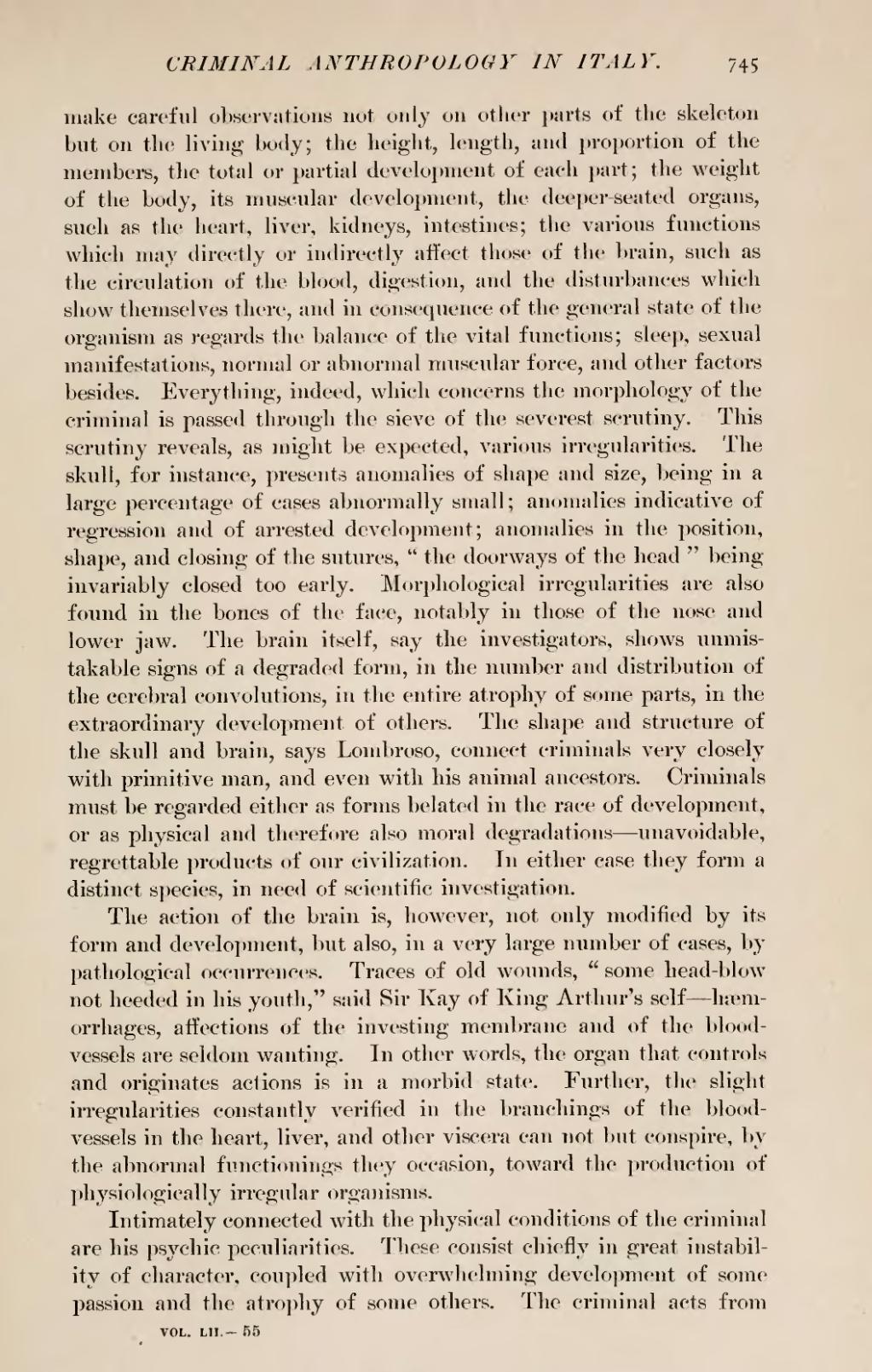make careful observations not only on other parts of the skeleton but on the living body; the height, length, and proportion of the members, the total or partial development of each part; the weight of the body, its muscular development, the deeper-seated organs, such as the heart, liver, kidneys, intestines; the various functions which may directly or indirectly affect those of the brain, such as the circulation of the blood, digestion, and the disturbances which show themselves there, and in consequence of the general state of the organism as regards the balance of the vital functions; sleep, sexual manifestations, normal or abnormal muscular force, and other factors besides. Everything, indeed, which concerns the morphology of the criminal is passed through the sieve of the severest scrutiny. This scrutiny reveals, as might be expected, various irregularities. The skull, for instance, presents anomalies of shape and size, being in a large percentage of cases abnormally small; anomalies indicative of regression and of arrested development; anomalies in the position, shape, and closing of the sutures, "the doorways of the head" being invariably closed too early. Morphological irregularities are also found in the bones of the face, notably in those of the nose and lower jaw. The brain itself, say the investigators, shows unmistakable signs of a degraded form, in the number and distribution of the cerebral convolutions, in the entire atrophy of some parts, in the extraordinary development of others. The shape and structure of the skull and brain, says Lombroso, connect criminals very closely with primitive man, and even with his animal ancestors. Criminals must be regarded either as forms belated in the race of development, or as physical and therefore also moral degradations—unavoidable, regrettable products of our civilization. In either case they form a distinct species, in need of scientific investigation.
The action of the brain is, however, not only modified by its form and development, but also, in a very large number of cases, by pathological occurrences. Traces of old wounds, "some head-blow not heeded in his youth," said Sir Kay of King Arthur's self—hæmorrhages, affections of the investing membrane and of the blood-vessels are seldom wanting. In other words, the organ that controls and originates actions is in a morbid state. Further, the slight irregularities constantly verified in the branchings of the blood-vessels in the heart, liver, and other viscera can not but conspire, by the abnormal functionings they occasion, toward the production of physiologically irregular organisms.
Intimately connected with the physical conditions of the criminal are his psychic peculiarities. These consist chiefly in great instability of character, coupled with overwhelming development of some passion and the atrophy of some others. The criminal acts from
